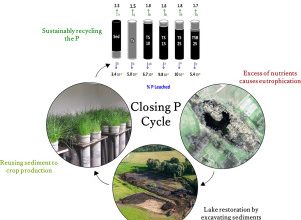Trachycarpus Fortunei: [Cultivation, Associations, Pests and Diseases]
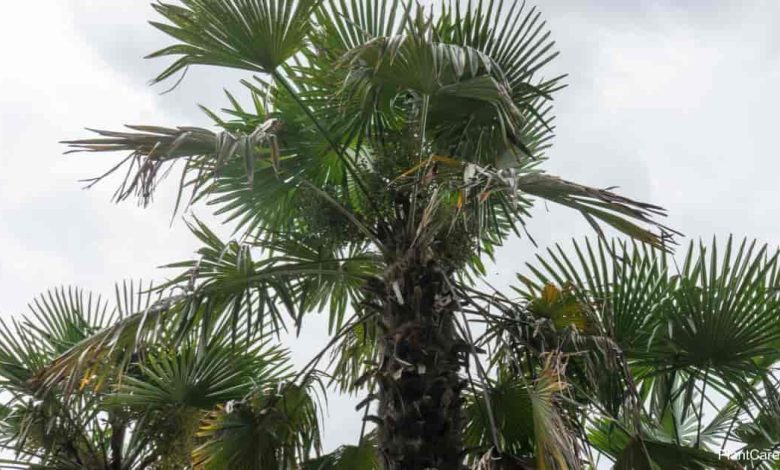
Important points when planting Trachycarpus Fortunei
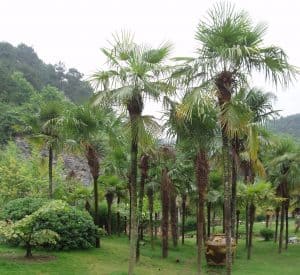 Where to sow? In full light. It needs a lot of sunlight.
Where to sow? In full light. It needs a lot of sunlight.- When? In spring.
- How do we prepare the land? removed. Withgood quality fertile substrate and liquid fertilizers such as guano. Good drainage.
- How do we water? Ideal with drip.
- How often do we water? In summer, 2 to 3 times a week without flooding. Rest of the year reduce the risks.
- Plagues and diseases? Very resistant to pests and diseases.
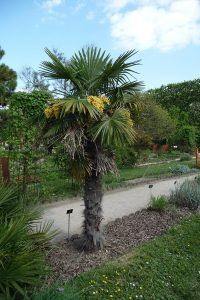 Trachycarpus fortunei belongs to the Arecaceae family and is part of the group of dioecious palm species native to Asia.
Trachycarpus fortunei belongs to the Arecaceae family and is part of the group of dioecious palm species native to Asia.
Some species of the genus are: trachycarpus fortunei, trachycarpus wagnerianus, trachycarpus martianus, trachycarpus takil.
It is known by the names of Palmera excelsa, Palmito elevated, Palmito de pie, Palmera de Fortune, Palma excelsa or Palm garden.
Trachycarpus fortunei is a medium-slow growing plant that can live up to 150 years. It is the smallest species of the family and the genus to which it belongs. The generic name of this palm tree is derived from the Greek “Trachys” (rough, rough) and “karpós” (fruit), due to the coarseness of its fruits.
The name of the species (Fortunei) is dedicated to the English botanist Fortune who extensively toured China and Japan, from where this tree originates.
When to sow a Trachycarpus Fortunei?
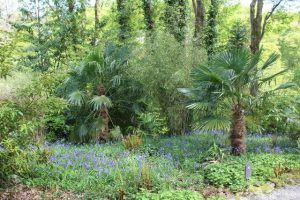 Of all the trachycarpus species, fortunei is the most widespread and cultivated. It can be sown in regions with cool summers and in areas with mild winters with temperatures no lower than -10° Celsius.
Of all the trachycarpus species, fortunei is the most widespread and cultivated. It can be sown in regions with cool summers and in areas with mild winters with temperatures no lower than -10° Celsius.
The sowing of Trachycarpus fortunei is usually done by seeds sown in spring, but as it grows so slowly, it is best that you acquire the specimen in a specialized place.
Where to do it?
The trachycarpus fortunei can withstand full sun exposure, and a climate of up to 17° centigrade, but protected from the winds.
It also adapts to partial shade and is highly suitable for sea temperatures and tolerates transplants very well. It can resist frost.
If trachycarpus fortunei is potted, it should be placed in a cool area with drafts. Likewise, it should be watered two to three times a week, so that the substrate is kept slightly moist.
It is ideal for large gardens and both to put alone or in a group. In its youngest age you can use it as an indoor plant, but always with very large pots so that its roots grow without problems. If you have it indoors, it should be in a very well lit place.
How to prepare the land?
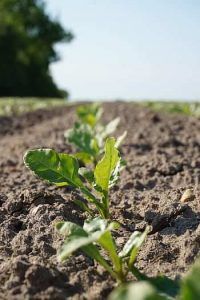 It is not demanding with the soil as long as it retains some moisture, preferring clay soils with organic matter. They support transplanting well, which we can do in spring with the root ball.
It is not demanding with the soil as long as it retains some moisture, preferring clay soils with organic matter. They support transplanting well, which we can do in spring with the root ball.
At this same time, trachycarpus should also be fertilized with specific materials for palm trees or liquid organic fertilizers such as guano.
When the transplant is carried out, it will be necessary to remove the first centimeters of the ground to replace them with fresh soil and add coarse sand to increase the drainage of the irrigation water.
How do we water a Trachycarpus Fortunei?
The trachycarpus fortunei palm must have constant humidity, without causing waterlogging.
In summer it is necessary to water the plant 2 to 3 times a week, avoiding waterlogging. The rest of the year it is recommended to reduce the risks. Special attention must be paid in summer periods or periods of intense winds.
How do we sow a Trachycarpus Fortunei step by step?
Trachycarpus can be multiplied by seeds sown in spring, but given its slow growth, it is better to acquire specimens in nurseries or garden centers.
- Inside the fruits of trachycarpus fortunei are the little seeds. This palm is also called the Himalayan palm, because it is the one that withstands the lowest temperatures: up to 20°C below zero.
- To proceed with the sowing of the seeds, a special seedbed substrate is used, a mixture of peat and sand, which favors the growth of the first roots, which are very delicate and must have a good substrate to reproduce.
- Put the fruits and press lightly. The procedure is the same for all types of palm trees, except that in the case of the date palm, the bones inside the date are planted.
- Once planted, the pots are taken outside, either to the balcony or to the garden, and great care must be taken that they do not lack water. Be vigilant so that the earth never dries out.
- After a few months, the first shoots begin to emerge. When they have grown enough, the branches should be removed one by one and replanted separately in larger pots.
- In two years, more or less, you will be able to enjoy a copy of the trachycarpus Fortunei palm tree.
What favorable associations does it have?
The association of crops of compatible plants produces benefits with respect to their cultivation separately, in addition to the use of light, water and/or nutrients.
However, trachycarpus fortunei, being a palm tree, should be kept away from weeds and weeds for its best development and growth.
What pests and diseases attack Trachycarpus Fortunei?
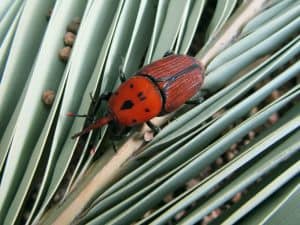 Trachycarpus fortunei is also well known for its resistance to pests and diseases.
Trachycarpus fortunei is also well known for its resistance to pests and diseases.
However, during the warm months special care must be taken and preventive treatments against the red palm weevil, the Paysandisia Archon, must be applied.
For preventive treatment, substances such as Imidacloprid and Chlorpyrifos can be used.
Bibliography and references
- Morcillo San Juan, Antonio. (2015). Pocket guide to the trees of Madrid. The 50 most common trees in our parks and streets. Mundi-Press Books. Madrid Spain.
- Del Canizo Perate, Jose Antonio. (2011). Palms. All genera and 565 species. Third edition. Mundi-Press Books. Madrid Spain.
- Of the Manca Tower, Santiago J.; Defago, Maria T.; Except Adriana. (2014) . Phytophagous insects associated with palm trees in the city of Córdoba, Argentina. Journal of the Argentine Entomological Society. Buenos Aires, Argentina. Reproduced from: http://www.redalyc.org/articulo.oa?id=322032818008
- Dugand, Armando. (1965). The palm trees and the earth. Chaldasia. National university of Colombia. Bogota Colombia. Reproduced from: https://www.jstor.org/stable/43405852

![Photo of Misting Irrigation: [Concept, Advantages and Requirements]](https://www.complete-gardening.com/wp-content/uploads/2022/08/misting-irrigation-concept-advantages-and-requirements-390x220.jpg)
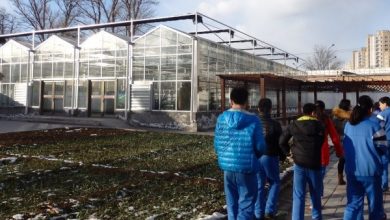
![Photo of Hyacinth Care: [Soil, Humidity, Pruning and Problems]](https://www.complete-gardening.com/wp-content/uploads/2022/08/hyacinth-care-soil-humidity-pruning-and-problems-390x220.jpg)
